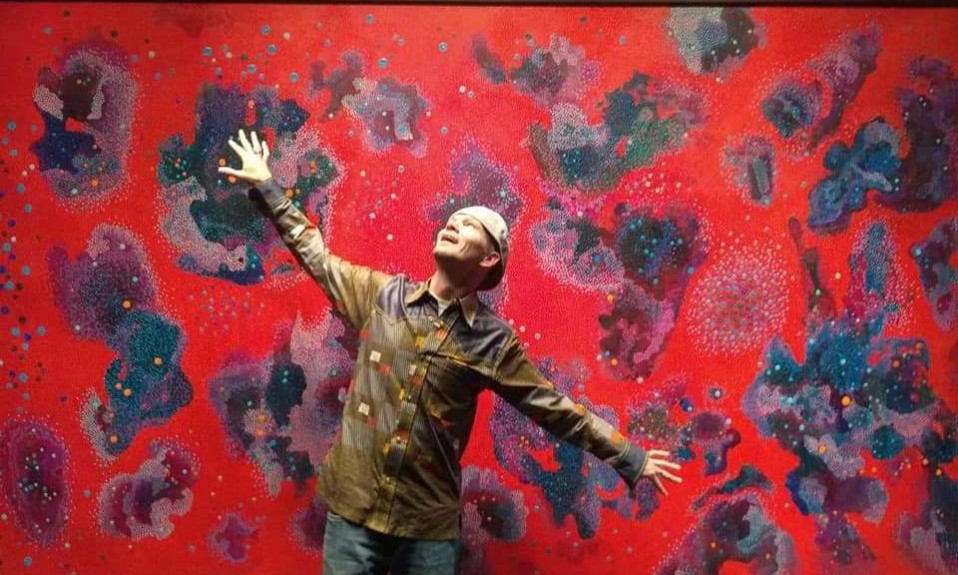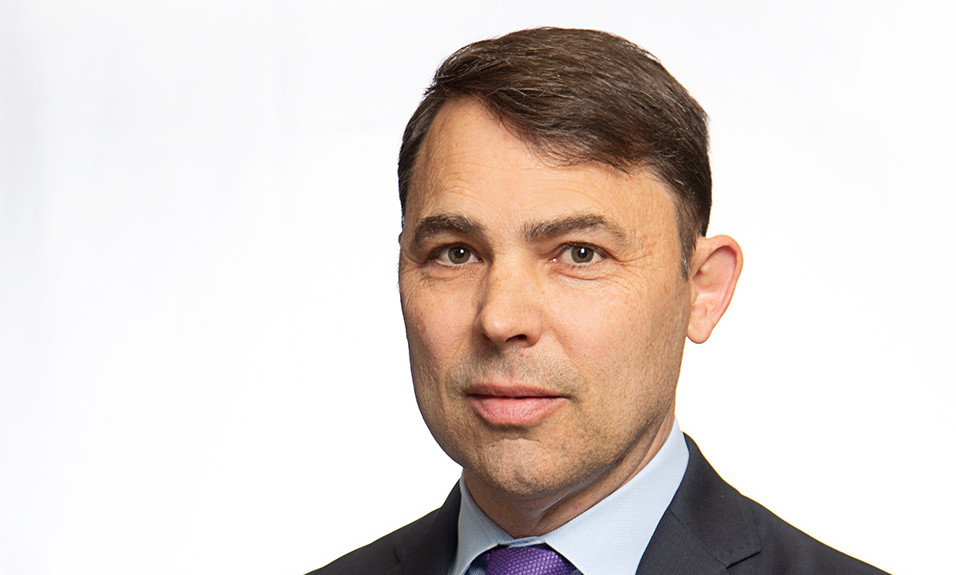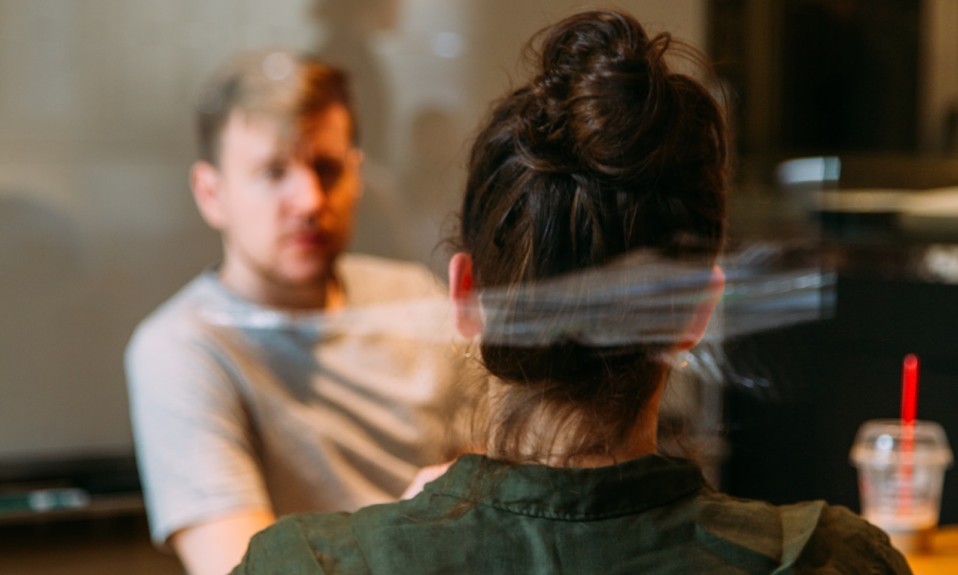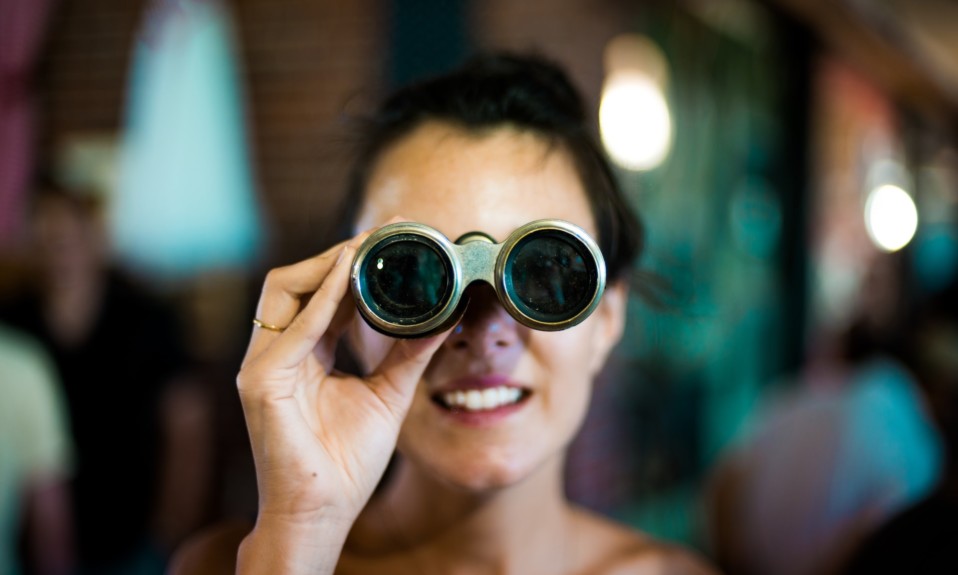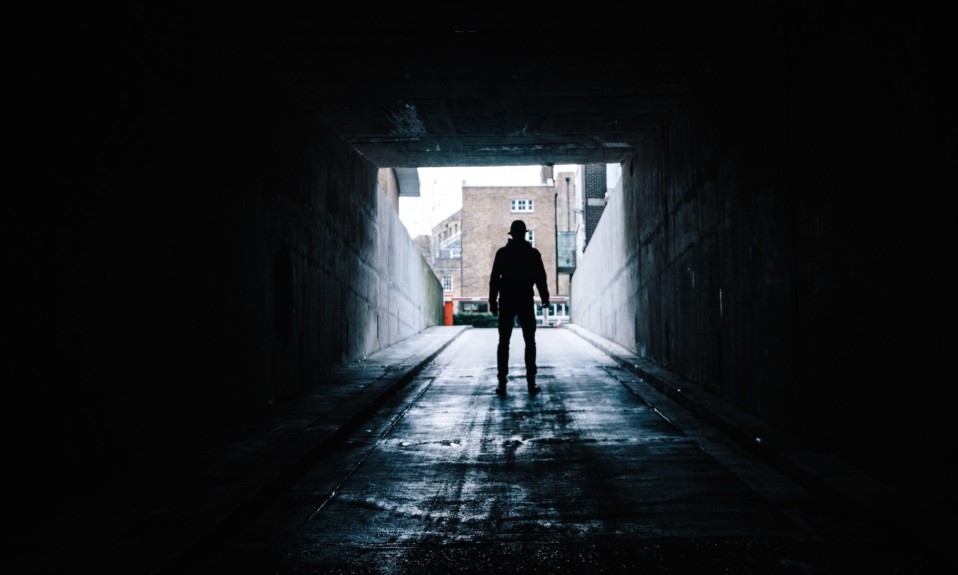CAiR, a fledgling organization founded by Darin Valdez [above], utilizes the power of art to facilitate healing and growth for those in recovery
By Veronica L. Holyfield
As someone experiencing homelessness on the streets of Denver for more than seven years, Darin Valdez had to access his innermost creative genius simply to survive. Whether it was dumpster diving to get food and belongings, fostering relationships to form a protective community or devising ways to feed his addiction to methamphetamine, cocaine and alcohol, Valdez was an expert at ingenuity.
After multiple failed attempts at finding an inpatient treatment program because of his limited means, Valdez was accepted to Sobriety House, and he discovered the help and community he needed to stay sober. After graduating from the inpatient program, he got a job there as a cook, immersed himself in the 12-step community with a sponsor and service commitments, and went through a career development program called CrossPurpose. He was hired as a house manager at Sobriety House and became a Certified Addiction Counselor, Level I, finding a sense of purpose in working with those who were afflicted with substance use and mental health disorders.
Yet Valdez still felt something was missing.
“I worked at Sobriety House for six years, and I saw that the thing people really struggled with was making those connections after they graduated treatment,” Valdez says. “They have this brightness to their soul—it’s just beautiful—and they’re so excited. And then almost 90% of them relapse after a month. They just can’t find their community.”
After a couple of years of sobriety, Valdez found himself questioning, Is this all that sobriety is? He was juggling work, school and his recovery program, and he felt what he describes as a depression and looming darkness in his soul. Is there anything joyful and fun about recovery? During this period, he discovered a love for playing the violin, and began to see how creativity and artistic expression could be a source of therapy, connection and community.
“I’m just following the universe’s lead. I’ve really attached to this higher-power idea, and over the last seven years, it has guided me into this life that I get to help people with things they struggle with.”—Darin Valdez, CAiR founder
Still working closely with CrossPurpose, Valdez had a conversation with the organization’s CEO, Jason Janz, that involved creating new levels of social impact in the city of Denver. Valdez knew he personally could have a significant effect on those who used art and creativity to achieve focus, mindfulness and self-grounding.
“I went to Jason, and I said, ‘I want to create a community center for people in recovery,” Valdez says. “All they need is 24 hours sober, and they can take music classes, art classes, meditation classes, but they’ll have a place to go when they leave treatment. They’ll have family when they leave treatment.
“I thought it was going to be for that person just leaving treatment, but it’s grown into so much more. Every single person in recovery struggles with community, especially over this last year [because of COVID-19].”
That was the spark—mere months ago—for the program called Colorado Artists in Recovery (CAiR).
Collaboration, Community and Connection in CAiR
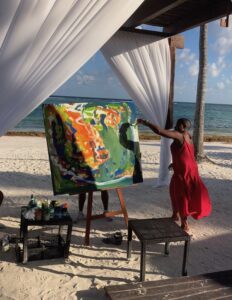
Knowing immediately that he couldn’t create a safe, well-rounded, creative community alone, Valdez reached out to people he knew who were already doing work with folks struggling with substance use and mental health issues. In looking for artistic workshop facilitators, Valdez teamed with Quána Madison, a fine art consultant, philanthropist and inner-peace gardener.
“When I read about CAiR and how they’re using creativity and art to promote nourishing people in recovery and creating community, that really resonated with me personally,” Madison says. “I personally have survived a lot of different complex traumas, including racial trauma, neglect, physical and emotional abuse, domestic violence, various health traumas and trauma related to being queer. In 2016, I nearly died from cancer survivor treatment, and when that happened, I had all these major changes to my body, where I was diagnosed with fibromyalgia, autoimmune disease, chronic pain syndrome and chronic fatigue syndrome. It drastically collapsed my entire life at once. I became really, really depressed and was suicidal. That’s where, for me, art and creative expression was bringing my soul back to life in a way that was just life-changing.”
Through all of these catastrophic tribulations, Madison filed for medical bankruptcy, and, like Valdez she experienced homelessness. There was only one form of creative expression that she had consistent access to: meditation and mindfulness. Madison found that the practice of getting in touch with her inner emotions, staying grounded in her recovery and focusing on connecting with her body and mind provided her with hope when everything felt close to bleak and near-impossible.
“There’s so much shame that happens, and being stigmatized by others and judged, where you don’t feel like you can talk to people about your experiences,” she says. “I feel like art opens up a way for people to share, even with strangers, and to be able to have an awareness about things in themselves that they didn’t know.”
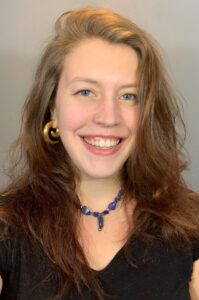
With Madison leading the meditation and creativity workshop, Valdez was then on the lookout for someone to lead an art workshop that employed creativity as a way to explore and process emotions. This is where he tapped the shoulder of Kendall Otis, an artist who had lost her passion for mixed media due to her drug addiction and alcoholism.
“I’m 20 months sober, and Darin’s known me since the beginning. He watched me hobble in, pale, shaking like a leaf, all that good stuff that happens to us when we’re finally done with that last bender,” Otis says. “He told me that they were doing an art class, and I was like, ‘Oh, that sounds amazing. I’d love to be a part of it, and maybe someday teach one.’ Twenty-four hours before the class started, he called me up and he said, ‘Hey, something happened and the teacher isn’t available, so you popped into my mind. How do you feel about doing this?’ I said, ‘Let’s do it. I’d love to.’”
Having grown up with learning differences, Otis had felt she was a bright kid but that her thoughts were like a hurricane inside her head, and she was constantly uncomfortable in her own skin. Art was the only way she could outwardly express what her jumbled-up words could not. She entered her first inpatient treatment center by the seventh grade, and would subsequently have 12 additional stays in a variety of rehabs. Through it all, art was something that could make the hole inside of her feel more colorful and full, regardless of how dark that art became.
“That’s what the whole class is based on,” Otis says. “It’s not about the end product—it’s about the process of doing the art. Emotions are energy, and energy gets recycled; it never disappears. We can use that energy to go up, or we can use that energy to go down.”
Where the Flow Meets the Road
Juli Jines had always considered herself a creative person, whether it was piano playing, creative writing or adult coloring books. However, all of that fell to the wayside during her years of substance misuse. It wasn’t until she went to treatment that she rediscovered her love of expression, and found herself back with a paint pen in hand.
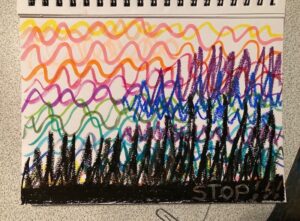
Through an alumni meeting, someone had mentioned a paint-by-numbers form of painting, and that sounded interesting to Jines, as she had always taken more to patterns and structure than free-form. After mastering that, she had the urge to start working on a blank canvas, without a guide or instructions, but she wasn’t sure where to start. Being newly in recovery, Jines was instructed to step out of her comfort zone, and she discovered CAiR as a way of taking a risk and trying something new.
“I took the [CAiR] class thinking I was going to learn how to paint better, and it was a real eye-opener that’s not what it’s about,” she says. “I’m just trying to grasp the idea that I can put my emotions in it. I’m learning that if I am upset or angry about something, I can take a crayon and scribble a page black if I want to, and that will release that emotion. It’s definitely adding to my toolkit, you might say, another thing that I can fall back on when shit hits the fan.”
In addition to a new and cathartic form of art, Jines now has a community she can connect with, both inside and outside the workshops.
“Every week, Darin assigns us a different buddy. He calls it the ‘accounta-bila-buddy.’ We are supposed to talk on the phone. It doesn’t have to be about art or anything like that—that’s how we get to know each other. It’s very focused on a group of people that are there for each other in times of crisis. We switch buddies every week, and I’ve maintained contact with previous ones. It’s definitely a relationship builder,” Jines says.
Bringing It Back to Center
In building connections for folks in recovery through the creation of art, Valdez has found his calling. CAiR participants build self-confidence through their growth as artists. As they safely access and express their emotions, they can identify their own inner strength and power.
We believe that every single person has a gift of creative energy within them that you’re born with. It’s always with you.”—Quána Madison, CAiR instructor
While the workshops currently are being offered via Zoom, the CAiR team hopes to garner enough funding to acquire a space so that it also can offer in-person classes. In the meantime, CAiR wants everyone from beginners to seasoned artists to know that the only requirement for attendance is 48 hours of sobriety.
“I strongly believe that you don’t need to identify yourself as an artist—you don’t need any particular art store technique,” Madison says. “We believe that every single person has a gift of creative energy within them that you’re born with. It’s always with you. You may already be expressing in ways you just never realized, and we want to nourish that.”
CAiR is still in its building stages, but its decisions are being informed by those who are most qualified: people from within the recovery community who have a passion for fostering the love of creative expression in others with addiction.
“I’m just following the universe’s lead,” Valdez says. “I’ve really attached to this higher-power idea, and over the last seven years, it has guided me into this life that I get to help people with things they struggle with.
“I don’t really know if I am qualified to be executive director [of CAiR], but the universe has been bringing the right people in my life. You know ET used to have the little pieces of candy to follow? I’m just following the little Reese’s Pieces.”


